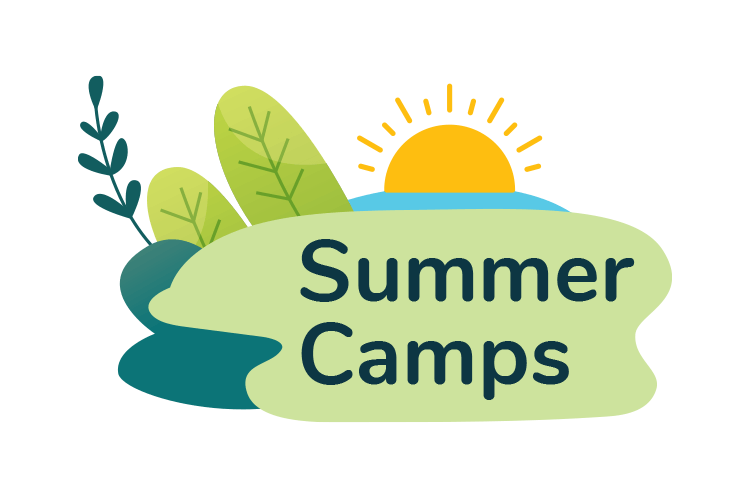As a somewhat sensitive, anxious child, I gained a great deal of peace and self-awareness spending unstructured time in nature.
 If your childhood was anything like mine, you were often told “it’s too nice to be inside, get out and play”. I never had to be asked twice to leave the house and get on my bike and ride for a few hours, climb a tree, hike to the creek or just walk in the woods envisioning myself as a rabbit in search of the ideal hiding spot to hunker down, chew on a blade of grass and contemplate life. This was all for the good. As a somewhat sensitive, anxious child, I gained a great deal of peace and self-awareness spending unstructured time in nature. It was a way to recharge my batteries and I developed a deep affection for the trees and the creatures I saw, a kind of love that comes from familiarity and acceptance. I don’t think my parents ever thought of playing outdoors as “therapy” or even overly important to my well-being, they just knew that kids should be outside in the fresh air, and not blankly staring at the television for hours on end. But since those halcyon 70s days, things have changed. Don’t get me wrong, I’m not saying today’s children are any different than I was and I don’t believe parents have lost their moral compass around what’s healthy for their children. Rather, there is an underlying is a sense of fear that most of us have all bought into and unfortunately we as parents often transfer this fear to our children. We all watch the news; it can seem like a big bad world out there. Free time is best spent in the
If your childhood was anything like mine, you were often told “it’s too nice to be inside, get out and play”. I never had to be asked twice to leave the house and get on my bike and ride for a few hours, climb a tree, hike to the creek or just walk in the woods envisioning myself as a rabbit in search of the ideal hiding spot to hunker down, chew on a blade of grass and contemplate life. This was all for the good. As a somewhat sensitive, anxious child, I gained a great deal of peace and self-awareness spending unstructured time in nature. It was a way to recharge my batteries and I developed a deep affection for the trees and the creatures I saw, a kind of love that comes from familiarity and acceptance. I don’t think my parents ever thought of playing outdoors as “therapy” or even overly important to my well-being, they just knew that kids should be outside in the fresh air, and not blankly staring at the television for hours on end. But since those halcyon 70s days, things have changed. Don’t get me wrong, I’m not saying today’s children are any different than I was and I don’t believe parents have lost their moral compass around what’s healthy for their children. Rather, there is an underlying is a sense of fear that most of us have all bought into and unfortunately we as parents often transfer this fear to our children. We all watch the news; it can seem like a big bad world out there. Free time is best spent in the  home where kids are under our watchful eye, right? But, there they play video games, spend hours on their smart phones and laptops – all of which results in the recent statistic that children spend 8.6 hours a day, or 62 % of their waking hours being sedentary. So much for health and safety! But it goes beyond a lost opportunity to be active, we may be missing a chance to build our kids’ mental health too. Books like “Last Child in the Woods: Saving our Children from Nature Deficit Disorder” by Richard Louv have sparked a national discussion about how losing a connection to the nature world is linked to increased anxiety, stress, and depression. The science suggests that play and particularly “nature-based” play is serious business, an integral tool to developing that all-important coping mechanism in the human brain. In fact, play is so important that the United Nations has declared it as a right for all children – as important as the right to education, adequate nutrition and protection from cruelty and neglect. The bottom line is that we need more natural spaces for children to enjoy unstructured play on their terms in an environment that parents and children feel is safe. This concept has inspired Camp Kawartha to initiate a project at its Environment Centre located near Trent U, called a “Natural Playscape”. A Natural Playscape combines the concept of a playground with a natural landscape, giving kids the chance to use the natural materials provided in an
home where kids are under our watchful eye, right? But, there they play video games, spend hours on their smart phones and laptops – all of which results in the recent statistic that children spend 8.6 hours a day, or 62 % of their waking hours being sedentary. So much for health and safety! But it goes beyond a lost opportunity to be active, we may be missing a chance to build our kids’ mental health too. Books like “Last Child in the Woods: Saving our Children from Nature Deficit Disorder” by Richard Louv have sparked a national discussion about how losing a connection to the nature world is linked to increased anxiety, stress, and depression. The science suggests that play and particularly “nature-based” play is serious business, an integral tool to developing that all-important coping mechanism in the human brain. In fact, play is so important that the United Nations has declared it as a right for all children – as important as the right to education, adequate nutrition and protection from cruelty and neglect. The bottom line is that we need more natural spaces for children to enjoy unstructured play on their terms in an environment that parents and children feel is safe. This concept has inspired Camp Kawartha to initiate a project at its Environment Centre located near Trent U, called a “Natural Playscape”. A Natural Playscape combines the concept of a playground with a natural landscape, giving kids the chance to use the natural materials provided in an  imaginative, non-prescribed way. Water, boulders, trees, dirt, logs, plants, and hills create an area to inspire young imaginations to create their own stories, working collaboratively or alone to develop a sense of wonder, of stewardship and a positive sense of self. Some special places within the Natural Playscape will include seating areas, climbing areas, a sand tracking and play area, gardens, an art space, a “soundscape” for making music and even a beehive! It doesn’t get much sweeter than that. For more information or to contribute to this very worthy endeavor, check out our campaign at www.fundly.com/natural-playscape-at-the-environment-centre or check out our website at www.campkawartha.ca/environment-centre/natural-playscape-at-the-environment-centre Donate what you can to help support this important project and “play it forward”. Help this young generation reconnect with nature and become happier, better adjusted adults of the future.
imaginative, non-prescribed way. Water, boulders, trees, dirt, logs, plants, and hills create an area to inspire young imaginations to create their own stories, working collaboratively or alone to develop a sense of wonder, of stewardship and a positive sense of self. Some special places within the Natural Playscape will include seating areas, climbing areas, a sand tracking and play area, gardens, an art space, a “soundscape” for making music and even a beehive! It doesn’t get much sweeter than that. For more information or to contribute to this very worthy endeavor, check out our campaign at www.fundly.com/natural-playscape-at-the-environment-centre or check out our website at www.campkawartha.ca/environment-centre/natural-playscape-at-the-environment-centre Donate what you can to help support this important project and “play it forward”. Help this young generation reconnect with nature and become happier, better adjusted adults of the future.

Our vision for the Natural Playscape


